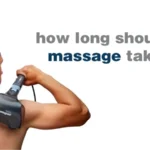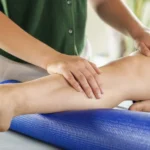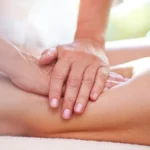Do you wish you could give yourself a massage whenever you have muscle tension or soreness? While self-massage can be a great way to relieve tension and pain, it’s not always possible. So why can’t you massage yourself? This article will discuss the reasons why self-massage can be difficult and why you might need to seek professional help instead.
Self-Massage: Definition

Self-massage is a practice of using the hands and fingers to rub, knead, or press the body’s muscles, joints, and tendons for therapeutic and relaxation purposes. It can be done on one’s own body or with the help of a massage therapist.
- It can help relax tense muscles, reduce stress, and improve circulation.
- It may also help alleviate pain, improve flexibility, and aid in healing.
- Self-massage can be done through various techniques such as stroking, kneading, and tapping.
- It can be used to target specific areas of the body that are sore or stressed.
- Self-massage can be done using the hands, fingers, arms, elbows, and feet.
- Self-massage is a great way to take care of oneself without having to pay for a massage therapist.
However, while self-massage can be a great way to relax or relieve tension, it can feel uncomfortable or even painful when done incorrectly. That’s why it’s important to understand why it doesn’t feel good when you massage yourself and how to properly do it.
Benefits of Self-Massage
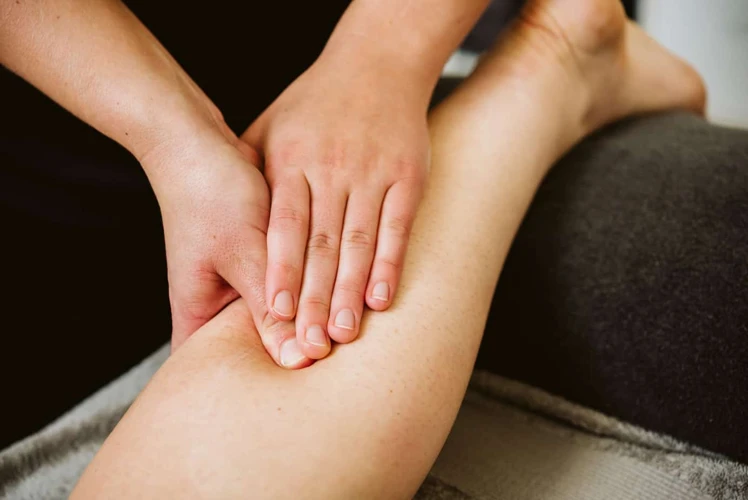
Self-massage is a great way to relax and reduce stress. It helps to improve circulation and can also reduce pain and tension in the body. It is important to remember that self-massage should always be done gently and never too hard. Self-massage can be performed on any part of the body, including the head, neck, shoulders, arms, back, legs, feet, and hands.
Benefits of self-massage include increased flexibility and range of motion, improved circulation, relaxation of tense muscles, improved posture, and increased mental clarity. It can also help to reduce stress and improve sleep quality. Additionally, self-massage can help to reduce muscle soreness and improve the body’s overall strength and endurance.
One of the biggest benefits of self-massage is that it is more cost-effective than a professional massage. It can also be done anytime and anywhere, making it more convenient. Self-massage requires no special equipment and can be done using simple tools such as a foam roller, massage ball, or even your own hands.
While self-massage has many benefits, it is important to remember that it can be uncomfortable or even painful if done too hard or incorrectly. That is why it is important to listen to your body and apply gentle pressure when massaging yourself. If you experience any pain or discomfort while self-massaging, stop immediately and seek professional help.
Overall, self-massage is a great way to relax and reduce stress. With proper technique, it can be a great way to reap the benefits of massage without the expense and inconvenience of a professional massage. So why doesn’t it feel good when you massage yourself? With the right technique, it can be just as relaxing and beneficial as a professional massage!
Disadvantages of Self-Massage

Lack of Expertise
Self-massage is a difficult task as one does not have the knowledge and expertise of a massage therapist. Massage therapists are trained to target specific pressure points and apply the correct pressure to get the desired outcomes. Self-massaging requires one to do trial and error and risk getting hurt.
Low Concentration
When self-massaging, it is difficult to maintain the same level of concentration as a massage therapist. One can easily become distracted and miss out on the subtle and important techniques. This can adversely affect the benefits of the massage.
Inability to Reach All Areas of the Body
Self-massage can be difficult to do on certain areas of the body, such as the back and shoulders. It is almost impossible to massage these areas without the help of someone else.
Lack of Professional Equipment
Self-massage can be done with the help of self-massage tools such as foam rollers and massage balls. However, these are not as effective as the professional massage equipment used by massage therapists. Hence, the benefits of a professional massage cannot be achieved with self-massage.
Reasons Why It Doesn’t Feel Good When You Massage Yourself
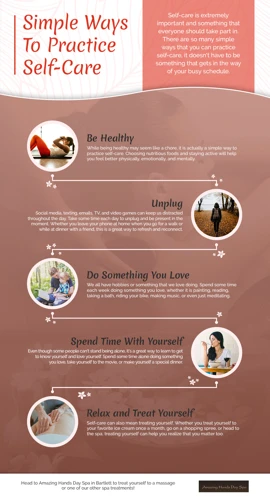
Lack of Expertise
Massage therapists have spent years honing their craft, learning how to apply the right amount of pressure and technique to the body for optimum results. Without this expertise, it’s almost impossible for you to replicate the same results when you massage yourself.
Low Concentration
It can be difficult to focus on the task at hand when you’re the one performing the massage. You’re likely to get distracted and not concentrate on the area of the body you’re massaging, which will lead to an unsatisfactory massage experience.
Inability to Reach All Areas of the Body
It can be tricky to reach certain parts of your body when you’re giving yourself a massage. For example, it can be difficult to massage your own back without the help of someone else. This can lead to an incomplete massage.
Self-Massage
Self-massage is often uncomfortable and can cause more tension in the body, as opposed to relieving it. This can be due to the lack of technique and expertise, as well as the inability to access certain areas of the body.
Recommendations for Self-Massage
- Use circular motions: Massaging in circular motions helps to relax the muscles and reduce tension. It also helps to increase blood flow, which can help to reduce pain and stiffness.
- Vary the pressure: When giving yourself a massage, vary the pressure. Start with gentle pressure and gradually increase it as needed. This will help to target specific areas and reduce any pain or discomfort.
- Focus on breathing: Taking deep breaths while giving yourself a massage can help to relax the body and mind. It can also help to increase the effectiveness of the massage, as it helps to focus the massage movements.
- Use oil or lubricant: When giving yourself a massage, use a lubricant or oil to help reduce friction and make the massage more comfortable. This can also help to make the massage more enjoyable.
- Avoid any areas of discomfort: If any areas of the body are too sore or painful, it is best to avoid them. Massaging over areas of discomfort can lead to further pain or injury.
- Drink plenty of water: After giving yourself a massage, it is important to drink plenty of water. This helps to flush out toxins from the body and keep it hydrated.
Frequently Asked Questions
What are some of the risks associated with self-massage?
Self-massage can be beneficial in providing short-term relief from muscle tension, but there are potential risks associated with it. Self-massage can cause muscle strain, injury, and aggravation of existing medical conditions. It can also lead to tissue and nerve damage if done improperly. Additionally, it is difficult to diagnose and treat the source of the pain when self-massaging and can lead to further issues if not done correctly.
What are some alternatives to self-massage?
Professional massage therapy is the best alternative for those who cannot give themselves a massage. Professional massage therapists are trained to use specific techniques to target certain areas of the body and provide relief from aches, pains, and tension. In addition, getting a massage from a professional massage therapist can provide additional benefits such as improved circulation, reduced stress, and improved flexibility. Other alternatives to self-massage include using massage tools such as foam rollers, massage balls, and massage chairs; and engaging in activities such as yoga and stretching.
What are the Benefits of a Professional Massage?
A professional massage can offer numerous benefits, such as improved circulation, reduced stress and tension, and improved flexibility. Professional massages can also help reduce muscular pain, improve posture, and promote relaxation. Additionally, a professional massage can help improve joint mobility, range of motion, and reduce inflammation. Professional massage can also help improve sleep patterns and reduce anxiety.
What are the most important safety considerations for self-massage?
- Know Your Limits: Self-massage can be beneficial, but it is important to know your own limits and not push yourself too far. If it hurts, stop.
- Use Appropriate Pressure: It is important to use the right amount of pressure when performing self-massage. Too much pressure can cause injury or discomfort.
- Be Mindful of Areas That Need Extra Care: Some areas of the body are more sensitive than others, such as the neck, lower back, and shoulders. These areas should be massaged with extra care and caution.
- Avoid Areas with Injuries: If you have any injuries or areas of concern, such as a broken bone, it is best to avoid self-massage in that area.
- Choose the Right Tool: It is important to choose the right tool for self-massage. Different tools, such as foam rollers, massage balls, and massage sticks, can target different muscles.
- Take Breaks: Self-massage can be intense, so it is important to take regular breaks to ensure you do not overexert yourself.
Are there any medical conditions that could be made worse by self-massage?
Self-massage can be beneficial for many conditions, but it can also be dangerous in certain cases. It is important to talk to a medical professional before attempting any massage techniques. Certain medical conditions such as deep vein thrombosis, varicose veins, and some types of skin disorders can be exacerbated by massage. People with nerve or muscle injuries, or those with circulation or immune system problems should also talk to their doctor before receiving or giving a massage.
Conclusion
Despite the potential benefits of self-massage, there are several reasons why it may not be the best option for everyone. Self-massage can be uncomfortable and may not provide the same level of therapeutic relief as a professional massage. Furthermore, self-massage can be physically dangerous if done incorrectly. For these reasons, consulting with a qualified massage therapist is recommended for those who are interested in massage therapy.
References
- Massage (Wikipedia)


